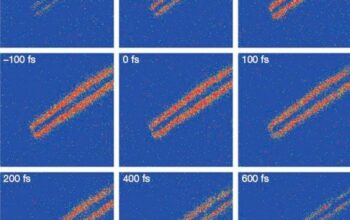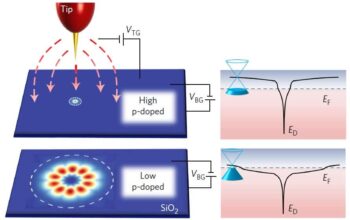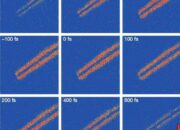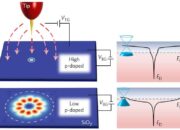Carbon (C) is an essential element within the realm of chemistry and materials science, possessing remarkable versatility that facilitates its role in various biological and synthetic compounds. Among its myriad allotropes, Carbon 60 (C60), also known as Buckminsterfullerene, emerges as a fascinating subject of inquiry due to its distinct molecular structure and exceptional properties. This article delves into the multifaceted nature of Carbon 60, exploring its unique characteristics, potential applications, and its role as a molecular switch.
The Structure of Carbon 60
Carbon 60 is a spherical molecule that contains 60 carbon atoms arranged in a shape reminiscent of a soccer ball, composed of pentagons and hexagons. This arrangement not only defines its geometric characteristics but also accounts for its stability and resilience. The carbon atoms in C60 are sp2 hybridized, creating a resonance-stabilized system that allows for delocalization of electrons, contributing to its overall stability and unique electronic properties.
First synthesized in 1985, Carbon 60 marked a pivotal moment in the field of chemistry, as it was the first discovered member of the fullerene family. These unique structures exhibit properties fundamentally different from those of conventional carbon allotropes, such as graphite or diamond. The symmetry inherent in C60, specifically its icosahedral symmetry, endows it with unique optical characteristics, making it an exciting candidate for further exploration in various scientific disciplines.
Unique Properties of Carbon 60
The properties of Carbon 60 are not solely determined by its structure; they are also enhanced by its molecular interactions. Some of the most striking characteristics include:
- Resilience and Strength: The covalent bonds in C60 result in exceptional hardness and resistance to deformation, allowing it to withstand considerable mechanical stress.
- Electronics: C60’s electron-accepting capabilities make it an interesting candidate for use in organic semiconductors, photovoltaic cells, and field-effect transistors.
- Solubility: Unlike other carbon allotropes, Carbon 60 exhibits varying solubility in organic solvents, which may facilitate its incorporation into various chemical applications.
- Potential for Drug Delivery: The hollow structure of C60 can encapsulate other molecules, opening up possibilities for targeted drug delivery systems in medical applications.
Carbon 60 in Nanotechnology
As the field of nanotechnology burgeons, Carbon 60 has emerged as a star player due to its nanostructural attributes. Its small size and unique molecular morphology provide a plethora of potential applications, including:
- Nanoelectronics: The ability of C60 to act as a semiconductor permits its application in the development of nanoscale electronic devices, where reducing dimensions and improving performance are crucial.
- Nanocomposites: When incorporated into polymer matrices, C60 has been shown to enhance mechanical properties, thermal stability, and conductivity, leading to innovative materials with enhanced performance attributes.
- Catalysis: The ability of C60 to interact with various chemical species lends itself to catalytic applications where it can promote chemical reactions at the nanoscale effectively.
Carbon 60 as a Molecular Switch
The concept of Carbon 60 as a molecular switch is particularly intriguing. Due to its ability to undergo reversible electron transfer, C60 can be positioned to function in a manner akin to a switch, enabling or disabling specific reactions or interactions. This capability is harnessed in creating smart materials that can respond to external stimuli, such as light or electric fields, ushering in a new paradigm in materials science.
Such switches could theoretically revolutionize fields like molecular electronics, where controlling electronic properties at the molecular level can lead to advanced computing systems. Furthermore, integrating Carbon 60 into optical sensors could yield devices capable of detecting environmental changes with unprecedented sensitivity, thus enabling developments in areas such as biosensing and environmental monitoring.
Challenges and Future Directions
Despite the robust potential of Carbon 60, several challenges must be addressed to leverage its capabilities fully. The production of pure, high-yield C60 is one such hurdle requiring advanced synthesis techniques to reduce costs and improve scalability. Furthermore, the biocompatibility of Carbon 60 remains a topic of active research; understanding how this molecule interacts within biological systems is crucial, especially for its applications in medicine.
Future research endeavors may focus on the functionalization of C60, improving its interaction with other materials and enabling novel applications across multiple industries. Moreover, as the integration of C60 into solvent systems and composites advances, it could play a pivotal role in the synthesis of new materials with unprecedented properties and functionalities.
Conclusion
Carbon 60, with its distinctive structure and properties, stands at the confluence of chemistry, nanotechnology, and materials science. As a potential molecular switch, it opens up avenues for innovation that can profoundly impact several domains, including electronics, medicine, and environmental sustainability. The ongoing research into its unique characteristics and applications will invariably uncover further insights, solidifying its place as a cornerstone of future technological advancements.










